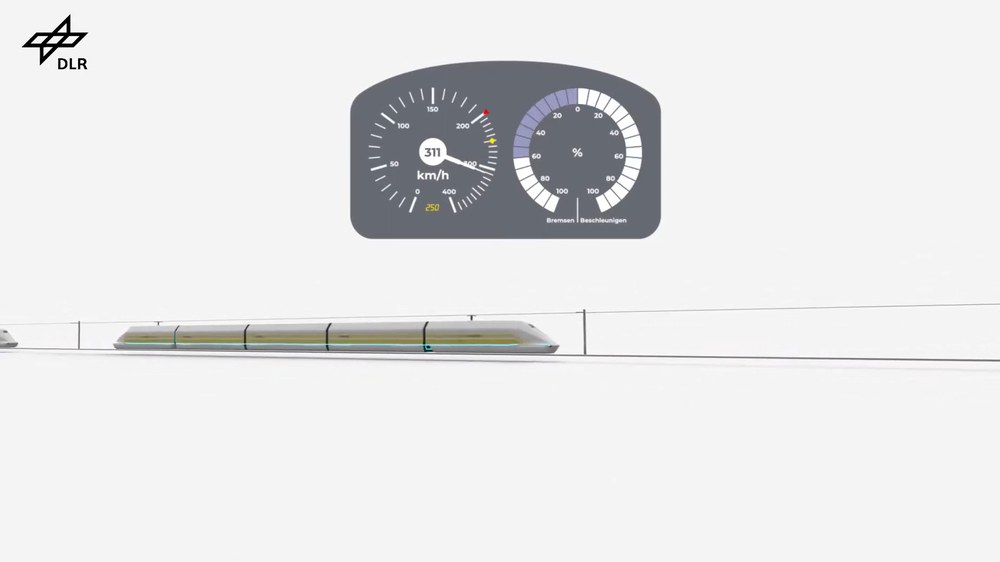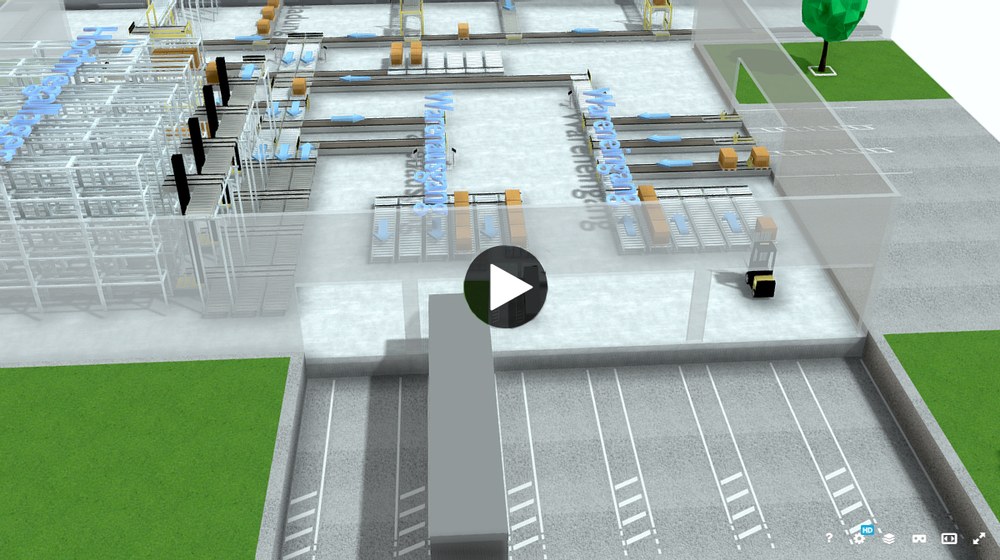Based on this, an operating concept was developed for the trains of the Next Generation Train (NGT) family. The high-speed railcar train (NGT HST) runs at timetabled speeds of up to 400 km/h on high-speed main lines, supplemented by an intercity railcar train (NGT LINK) with speeds of up to 230 km/h, which transports passengers from the surrounding areas to the hub stations on the high-speed HST line. In addition, an autonomous railcar freight train (NGT CARGO) is currently being developed together with the associated logistics concept, which can be integrated into the operating concept of the passenger multiple units.

NGT CARGO: Intermodales Terminalkonzept
Your consent to the storage of data ('cookies') is required for the playback of this video on Quickchannel.com. You can view and change your current data storage settings at any time under privacy.
The NGT CARGO trains are made up of individual wagons and high-performance power cars as required. The individual cargo wagons have their own low-power drive and an on-board energy storage system. This enables them to operate sidings autonomously and independently, either individually or as a Cargo single wagon formation. The train is formed and separated fully automatically without the use of shunting locomotives. The individual Cargo wagons are connected to each other with automatic couplings. In addition to power, energy and data are also transmitted.

For high-speed operation, Cargo single wagons and Cargo single wagon formations are put together with one or two power cars. The power cars provide the additional traction power required for high-speed transport. The number of individual cargo wagons and power cars can be varied according to customer requirements by adjusting the maximum speed, whereby the system is designed for speeds of up to 400 km/h in the fastest configuration.
Several NGT Cargo railcar trains can be virtually coupled together via a remote coupling, which increases operational flexibility. Coupling with the other trains in the NGT family (NGT HST and NGT LINK) is also possible. This makes it possible to operate dynamically. This means that the railcar trains can couple and uncouple remotely during the journey. This bundling of passenger and freight traffic makes it possible to make optimum use of the available line capacities.
The NGT CARGO combines flexible fine distribution in single wagonload traffic with low personnel costs and short transport times. Various load carriers are automatically loaded and unloaded at open sidings and in centralized logistics centers. Even small quantities of high-value or urgent goods can be transported as required and at reasonable cost.
The NGT CARGO concept shows what the freight transport of the future could look like. The NGT CARGO is the core of a comprehensive logistics concept with rail as the central mode of transport. With the NGT CARGO high-speed freight train, a flexible means of freight transportation is being developed that is competitive and ecological in intermodal competition.


NGT Logistics Terminal
The associated NGT Logistics Terminal complements the NGT research landscape and makes the topic of automation in the transfer of goods between rail and road much more advanced.


